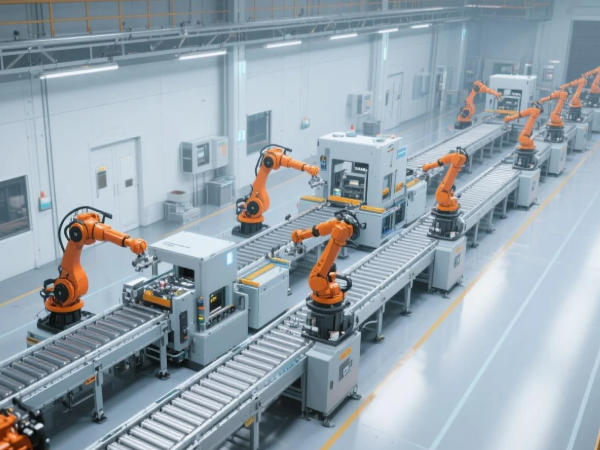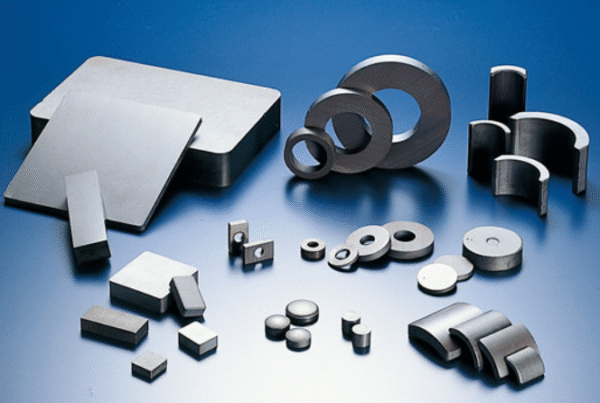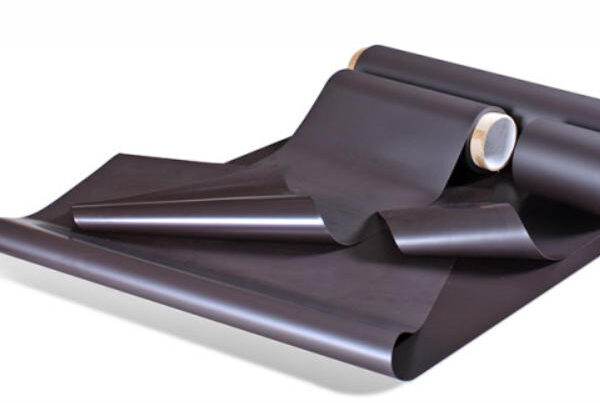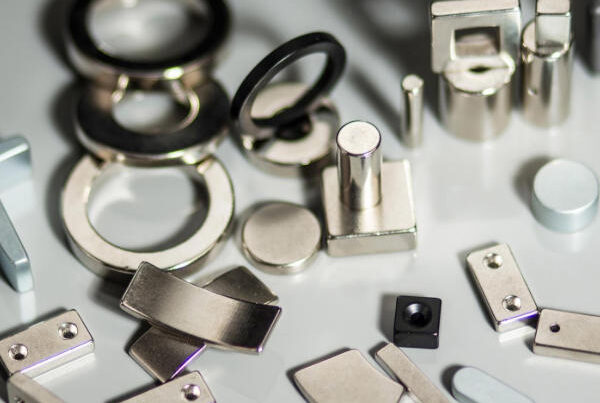In modern intelligent manufacturing and automation, robot magnetic field components play a crucial role in ensuring precise motion control, sensing, and energy conversion. These components are responsible for generating and stabilizing magnetic fields that directly affect a robot’s positioning accuracy, torque output, and operating reliability. Achieving high-performance magnetic component manufacturing requires precise material selection, optimized magnetic circuit design, and advanced assembly and testing technologies.
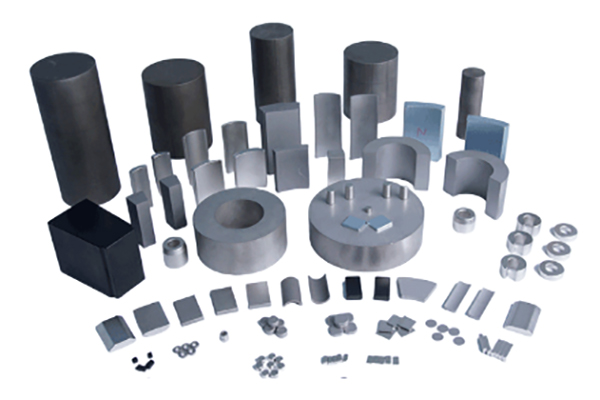
1. Magnetic Material Selection – The Foundation of Performance
High-quality magnetic materials are the foundation of every robot magnetic field component. Common materials include neodymium-iron-boron (NdFeB), samarium-cobalt (SmCo), and ferrite magnets, each offering distinct magnetic energy densities and temperature characteristics.
NdFeB magnets provide strong magnetic flux and high torque output, ideal for precision robotic joints. SmCo magnets, with excellent thermal stability and corrosion resistance, are preferred for high-temperature or harsh environments. Selecting the right magnetic material ensures stable performance and extends the lifespan of robot magnetic field components.
2. Magnetic Circuit Design Determines Field Uniformity
Magnetic circuit design is the core of magnetic component manufacturing. It determines how efficiently magnetic flux flows through the rotor and stator, influencing torque smoothness and magnetic precision.
Engineers use 3D electromagnetic simulations to optimize pole shape, pole arc ratio, and air gap spacing. A well-designed magnetic circuit minimizes leakage flux and harmonic distortion, ensuring that the robot magnetic field components produce consistent torque and low vibration during operation.
3. High-Precision Machining Ensures Consistent Magnetic Fields
In magnetic component manufacturing, precision machining directly determines magnetic performance consistency. Each magnet, housing, and shaft must meet micrometer-level tolerances to ensure uniform air gaps and magnetic alignment.
CNC machining and automated assembly systems help eliminate human error, while surface treatments such as nickel plating, epoxy coating, or passivation protect against corrosion.
These precise processes guarantee that magnetic flux direction and intensity remain stable, which is essential for smooth robotic movement.
4. Assembly and Bonding Technology Affects Stability
The assembly stage of robot magnetic field components requires extreme precision. Magnetic poles must be perfectly aligned; even minor polarity errors can cause magnetic interference or uneven torque output.
Common methods include vacuum bonding, mechanical press-fitting, and heat-curing adhesives. Adhesives must have excellent temperature resistance, shock absorption, and insulation properties.
After assembly, each component undergoes flux density testing and dynamic balancing to ensure the magnetic circuit design performs as intended under operational loads.
5. Testing and Calibration Guarantee Magnetic Precision
Strict testing and calibration are essential to ensure that robot magnetic field components meet design specifications.
Measurements include flux density, air gap uniformity, demagnetization curves, and circuit closure efficiency.
Advanced robots often employ Hall sensors or fluxmeters for real-time monitoring during production.
These quality control processes maintain magnetic precision and prevent performance degradation due to magnetic hysteresis or material fatigue.
6. Surface Coating and Protection Extend Component Lifespan
Since robot magnetic field components often operate in high-humidity, high-vibration, or high-temperature environments, surface protection is vital.
Nickel or epoxy coatings, as well as Parylene layers, can effectively prevent oxidation and mechanical wear.
Such coatings improve corrosion resistance and enhance overall durability, ensuring the magnetic component manufacturing process delivers products that perform reliably over time.
7. Intelligent Manufacturing Improves Consistency and Efficiency
With the rise of Industry 4.0, magnetic component manufacturing has become increasingly automated and intelligent.
Robot-assisted assembly lines and AI-based visual inspection systems now ensure high precision, consistent quality, and faster production cycles.
This digital transformation not only improves manufacturing efficiency but also enhances the long-term performance and reliability of robot magnetic field components used in advanced automation systems.
In summary, the performance of robot magnetic field components depends on magnetic material selection, magnetic circuit design, machining accuracy, assembly quality, and surface protection.
By integrating smart manufacturing technologies and advanced design tools, the next generation of magnetic component manufacturing will achieve higher magnetic precision, lower energy losses, and longer service life.
These innovations will continue to empower intelligent robots with smoother motion control, greater energy efficiency, and enhanced operational stability.


